Does granite stay cold?
lavender_lass
13 years ago
Featured Answer
Sort by:Oldest
Comments (38)
davidro1
13 years agolast modified: 9 years agoRelated Discussions
Ways To Stay Busy Shut-In by the Cold
Comments (24)I believe most places are going to warm up a little today! We're on the plus size this morning (+1 F. earlier +2 F. now :-) and expected to warm all the way up to +8 F. The low tonight is still supposed to be -10 F. but that's the last minus number I see in the 10 day forecast! And if that's not enough, we might even top the freezing mark on Saturday and Sunday! In the meantime, my hostas are fast asleep under 40+ inches of snow, and we have purchased a new snow blower that could easily blow snow high enough to bury our garage. This winter... I'm not sure even that can go high enough to move all the snow we might end up with into the limited areas we have to pile it, but we're going to give it a try! We move snow and spend time caring for our poor little Ginger (15 year old Pekinese mix) who is having heart problems. We took her to the vet when she developed a bad cough and then started crumpling to the ground after any (even mild) exertion. An xray confirmed an enlarged heart (Stage 3 heart disease). The vet says that currently available medications (she's now on one to strengthen her heart, one for blood pressure, and also a diuretic) can hopefully give her good quality of life for a while. I hope so. She is elderly, but we are not ready to lose her yet. Some days, my heart just breaks. In between, we watch movies, read, play games on our kindles.... had to give up baking after the holidays, due to bad side effects (holiday weight gain). And, we wait for spring....See Moreis it safe to let it stay out in the cold after it rooted?
Comments (5)I have successfully rooted just one rose this summer, Polarstern, a HT. Its parent generally does not need winter cover here in Iowa to overwinter. It is about 4 inches tall w/ lots of new leaves and a couple tiny branches sprouting. I have had it in full sun now for about three days w/ no ill effects. It is in a 4" pot. Can I plant this in the ground and mulch well, and will it make it through winter? Should I plant it now, or wait until we get a freeze. If I left it in an unheated dark shed instead, how would that work? I am guessing I'd need to water all the time and put the plastic liter pop bottle over it, but w/ roots above ground that would seem a harsh environment? Thoughts please!...See Morefurnace does not stay on long enough
Comments (3)Hi George, Yes, I have the line you describe. It goes to our laundry tubs. It was blocked, but I cleared it a few days ago. I don't know what a p-trap is. You say, "it is going off on some kind of pressure or limite switch" Could you elaborate? Hi blacknumber, Well, that's another story. I bought this Hunter programable thermostat, but had trouble understanding the instructions. When I finally did get it to work it did not reach the set temperature either, and the batteries (freshly charged) expired during the night. So, I removed it and put back the old CT51a manual thermostat. The system seems to run fine in cooling mode, in summer. One other thing. This furnace is supposed to be dual speed. But I've only ever heard the fan on one speed. I've noticed though, that when I turn on the AC the fan seems to blow much harder. Am I missing something? Thanks, John...See MoreGranite picked now getting cold feet.
Comments (43)neesie, be nice. New info turned up on the Crema Bordeaux and people need to know of it. You got a problem with a potential problem being discussed? Ever think that others might want to know? As to checking weekly, the harm caused by low dose radiation might take years to show up. Larrylwill, You have to admit that the mold issue caught the insurance industry flat footed and their reaction was to eliminate coverage for mold related problems, or at least that was what I was last told. The Radon researchers still has to fight a fringe group of people that refuse to believe it is a problem. And at one point, we still sold lead paint here in the US, despite the Europen countries banning it decades before. So just because they aren't aware of the potential risk doesn't mean they know about it. Mark my words, once they hear of it, it will be excluded from policies. As to the potential risk of future lawsuits over granite and radiation/Radon, I emailed one of the most respected lawyers in the toxic law field, Dr. Chiodo from Chicago. He called me the next day, and warned of a storm of future lawsuits over sterility, cancer, and even birth defects caused by the levels of radiation we were finding. He mentioned that standing at a granite countertop subjected the wrong area of your body to a lot of radiation if you have a hotter than normal granite top. Dr. Chiodo warned us to hire the best enviromental lawyer in our state and get a disclosure/consent form drawn up. But, he warned that even if the homeowners both signed, it would not be binding for their kids or any visitors. We aren't too worried since we test before purchasing slabs. Note that I called him Dr. Chiodo. He is a doctor, lawyer, an industrial hygenist anda biomedical engineer among other credintials. Said he was an over acheiver. LOL There is a link below with more info on Dr. Chiodo. Look down a ways to the section on "What the Experts say about Radiation in Granite Countertops" I didn't post this to start another debate. I posted it because new info disproved what we previously thought, that most Crema Bordeaux was likely safe. Now we aren't as sure. It won't cost $10 to check it, or send me a sample if you have one left and I'll check it then send it for professional testing if needed. Here is a link that might be useful: Dr. Chiodo, more info....See Morewritersblock (9b/10a)
13 years agolast modified: 9 years agodianalo
13 years agolast modified: 9 years agornest44
13 years agolast modified: 9 years agopharaoh
13 years agolast modified: 9 years agodavidro1
13 years agolast modified: 9 years agodavidro1
13 years agolast modified: 9 years agoplllog
13 years agolast modified: 9 years agoformerlyflorantha
13 years agolast modified: 9 years agomary_lu_gw
13 years agolast modified: 9 years agodavidro1
13 years agolast modified: 9 years agowritersblock (9b/10a)
13 years agolast modified: 9 years agoplllog
13 years agolast modified: 9 years ago3katz4me
13 years agolast modified: 9 years agodavidro1
13 years agolast modified: 9 years agofarmgirlinky
13 years agolast modified: 9 years agoboxerpups
13 years agolast modified: 9 years agorob from nj
13 years agolast modified: 9 years agored_eared_slider86
13 years agolast modified: 9 years agobrickeyee
13 years agolast modified: 9 years agolavender_lass
13 years agolast modified: 9 years agodavidro1
13 years agolast modified: 9 years agoformerlyflorantha
13 years agolast modified: 9 years agoboxerpups
13 years agolast modified: 9 years agolavender_lass
13 years agolast modified: 9 years agopharaoh
13 years agolast modified: 9 years agodavidro1
13 years agolast modified: 9 years agokaseki
13 years agolast modified: 9 years agolavender_lass
13 years agolast modified: 9 years agofarmgirlinky
13 years agolast modified: 9 years agoboxerpups
13 years agolast modified: 9 years agoformerlyflorantha
13 years agolast modified: 9 years agomorgne
13 years agolast modified: 9 years agoNancy in Mich
13 years agolast modified: 9 years agofarmgirlinky
13 years agolast modified: 9 years agoblfenton
13 years agolast modified: 9 years agoigarvin
13 years agolast modified: 9 years ago
Related Stories

INSIDE HOUZZHow Much Does a Remodel Cost, and How Long Does It Take?
The 2016 Houzz & Home survey asked 120,000 Houzzers about their renovation projects. Here’s what they said
Full Story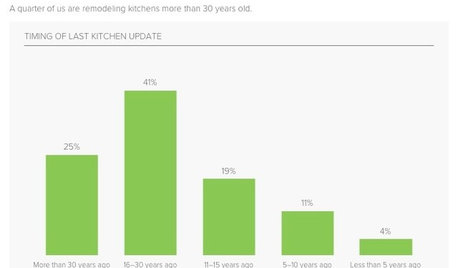
KITCHEN DESIGNSurvey Results: Kitchen Trends That Seem Here to Stay
More than a third of respondents in Houzz’s annual kitchen trends report now have the means to remodel. Here’s what else they told us
Full Story
REMODELING GUIDESBathroom Workbook: How Much Does a Bathroom Remodel Cost?
Learn what features to expect for $3,000 to $100,000-plus, to help you plan your bathroom remodel
Full Story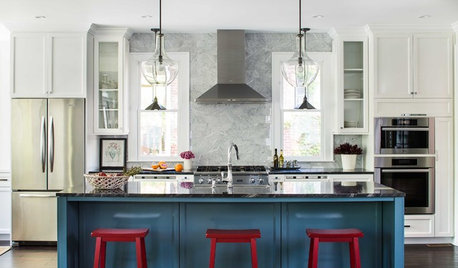
KITCHEN DESIGN9 Kitchen Color Ideas With Staying Power
Stick to these classic color combinations for a kitchen that will never go out of style
Full Story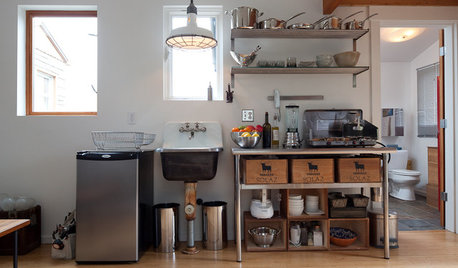
REMODELING GUIDESShould You Stay or Should You Go for a Remodel? 10 Points to Ponder
Consider these renovation realities to help you decide whether to budget for temporary housing
Full Story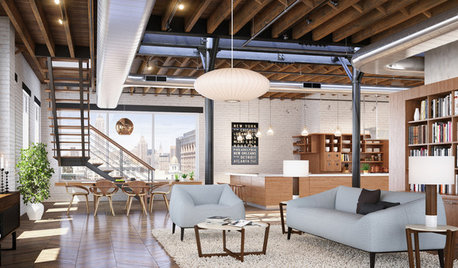
MOST POPULARIs Open-Plan Living a Fad, or Here to Stay?
Architects, designers and Houzzers around the world have their say on this trend and predict how our homes might evolve
Full Story
MOST POPULARWhen Does a House Become a Home?
Getting settled can take more than arranging all your stuff. Discover how to make a real connection with where you live
Full Story
ARCHITECTURE15 Smart Design Choices for Cold Climates
Keep your home safe and comfortable in winter by choosing the right home features and systems
Full Story
GARDENING GUIDES10 Cold-Hardy Succulents for Cool-Season Interest
These attractive plants shrug off colder temperatures, and many can be brought inside in containers in extra-chilly climates
Full Story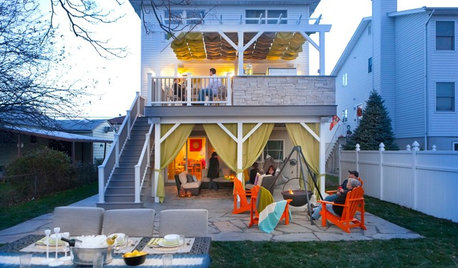
LIFEHouzz Call: What Does Summer Look Like at Your Home?
Kids, water, sunshine, backyards, cold drinks — share photos of what summer at home means to you
Full Story


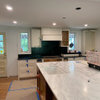
plllog